The first three issues of This ONE newsletter—an 80% opening rate across all readers! I am very grateful for this more than positive response and am committed to continuing this avenue of learning and sharing.
The dots I am connecting this week are:
- The Game of Office Politics
- Other people’s judgment
- Toxins in the Environment
This ONE Idea
Can fish know water?”
Fish are intimately aware of temperature, PH levels, currents, and oxygen content. Like fish, we pick up data from our surroundings all the time, too.
Don’t let the data overwhelm you. Turn them into insights and use them wisely.

I. Office Politics and “What is trying to happen?”
The ancient wisdom goes, “There is politics where there are people (or mammals).”
Just like water, politics can indeed be dangerous. Many dread politics and try to avoid it altogether. But it is a costly strategy.
As we disengage, we become passive in the game of influence. We are unprepared for any changes. We have no skin in the game and would not have accumulated credit when needed. Worst, we won’t be spared of politics anyway.
In groups I coached, I often witnessed innocent bystanders getting scapegoated or triangulated (e.g., made the bearer of bad news between two warring parties).
So it’s time to reflect on your relationship with “office politics.”
From a group psychology point of view, “politics” has a more neutral name: group dynamics. Every group has its dynamics from day one, which evolves every second and becomes prominent in days.
Dynamics is how the fishnet of interpersonal relationships moves and channels its energy.
It is crucial to learn about not only the interpersonal relationships, “who trusts who” and “who hates who,” but also how “energy” is being channeled around.
This “energy” might be too abstract to describe, and I only learned (and am still learning) through working with groups. But you certainly can give it a try and get better at identifying the energy.
Here are two examples. Let’s say there are two groups.
In Group 1, multiple highly ambitious people dominate the group meetings while the rest comply or drift away in protest.
In group 2, everyone is polite but keeps a safe distance from each other.

The illustration has two main components: the circles and the arrows.
The circles represent each player’s influence (power) in the decision process. Also, “who is empowering whom?” In general, the more connected one is, the more empowered they are in a group.
The arrows in the illustration are not about real movements but “what is trying to happen?”
Group 1: Unless someone makes an effort to bring the two “astray” members closer to them, the first group will likely break apart and function as a group of three.
Group 2: All members are bound by a membership duty and harmony without real interpersonal relationships. If they were lucky, such harmony might persist until the end of this group’s life. When two or more members form deeper bonds, the “democratic” balance will shift.
What we can see is just a snapshot of this moment. The power surely matters. But the energy is more important because we see “what is trying to happen.” Any group, like any person, or interpersonal relationship, always evolves.
Making such observations on the organization we are part of is incredibly challenging but important.
- Remove ourselves from the picture and re-introduce rationality and neutrality.
- Take a step back. See the organization or team as an entirety.
- Ask, “What is trying to happen here?”
II. Other people’s judgment
We all care about other people’s judgment, to some extent. Sometimes, we know that we “could care a bit less.”
What if there is no such thing as “other people?”
I have introduced the “Projection” concept to some readers before. If you are new to the term, take a moment to read the below article.
Projection | Psychology Today Singapore
According to this theory in modern psychology, “other people’s judgment” is nothing but our judgment that we have yet to own. The judgment is usually about the part of ourselves that we have yet to accept.
According to this theory in modern psychology, “other people’s judgment” is nothing but our judgment that we have yet to own. The judgment is usually about the part of ourselves that we have yet to accept.

It will feel extremely painful because the flaw that “other people” are picking up is exactly what we hate.
But think about it: if I don’t care at all about the scar, even if someone asks about it, I might just tell a story about how it was formed. No pain, you see.
Another aspect of self-acceptance is about our valence in groups.
In psychodynamic theories, we all have default tendencies (favorite personas) in groups. Take football as an example, some people’s default position is forwards, and some are midfielders.
In some groups, our tendencies can get triggered. Such tendencies are usually formed in early experiences at home or in school.
Valence: The tendencies to internalize, collude with, and respond to the projections of others. It is the propensity of an individual to occupy a similar informal role repeatedly in groups. It depends on one’s object relations and social identities.
(Source: internet – psychodynamic theories)
I grew up as the youngest child in class from 3 years old. My valence is the “outsider” who observes and brings different voices. This is still largely true in the profession I have chosen. But I don’t always get triggered to fall back into this. In groups with strong cohesion and connection, I tend to be drawn in much more and become an “insider.”
And in groups where I need to take the driver’s seat, I am pretty comfortable in taking the lead (after a lot of self work). This means I am acting not in my valence, but what the role and group require of me. Does my valence still act out? Oh yes certainly, especially when I am under pressure or don’t pay attention to things.
What we need is not to battle our valence when they act out. Instead of not blaming ourselves for our default tendency, awareness followed by intentional self-work is a better option.
That is where growth happens. With such awareness, we pay more attention to the field than to our imperfections.
- Where is the ball, and where is a gap that I can fill in?
- Where is the power of the whole team from?
- Who can I relate to, in order to create more synergy?
- What is trying to happen?
Such a shift is the moment we regain control. We outgrow our valence.
III. Waste as nutrients
As an HSP (Highly Sensitive Person), I feel many things.
I remember my visit to the jungle-like engine room of a container ship. The engineer said there were 18,000 types of alarms, and a dozen went off at any given moment. An HSP’s inner life may feel like such an environment at times.
Below is an article on this categorization (and I believe you can find checklists online too).
Highly Sensitive Person | Psychology Today Singapore
In February this year, I was emotionally swept away by the many layoffs, which also affected people I knew. I started to run pessimistic thoughts of AI rendering human beings useless and jobless, let alone needing any coach. That means I would be pretty much useless, too.
When I noticed this pattern, I asked myself:
Does this anxiety belong to me or what I picked up from the environment?
When I started to talk to people, I was surprised to find how many people carried similar sentiments. Even my 65-year-old mother, living in a small town in China, told me how the scary AI would take all our jobs.
I came to an important realization. The world is changing, and facing this change, a certain kind of anxiety is spreading, causing panic and pessimism in our society.
This anxiety was mine but not entirely mine.
Seeing this, I choose not to be the carrier of this pessimism and fear.
I believe that humans are not doomed, and neither is our career.
True, the changes will be massive in all aspects of our society, and we will be uncertain about what will come for a very long time.
I choose to find answers.
“How can we future-proof our career in the era of AI?”
From there was the birth of my two initiatives. One is to have conversations with AI experts, CTOs, CIOs, Talent leaders, and Chief Engineers. Two is to ask people in tech what this change means to them.
I don’t think we will reach a definite answer. We will most likely create more questions. But aren’t all discovery processes about asking better questions?
This may not be the best example but a most immediate one – I picked up something from the environment around me. By becoming aware of what I picked up, I could let go of it. It also helped me to notice the positive energy in my negative emotions: people are looking for answers.
As I connected with this energy, I became activated with my new initiatives.
Question For You
In the environment you live or work in, what is trying to happen? What positive energy can you connect with?
Want to share this issue of This ONE via text, social media, or email? Just copy and paste this link:
This ONE: Office politics, toxic environment, and other people’s judgment

